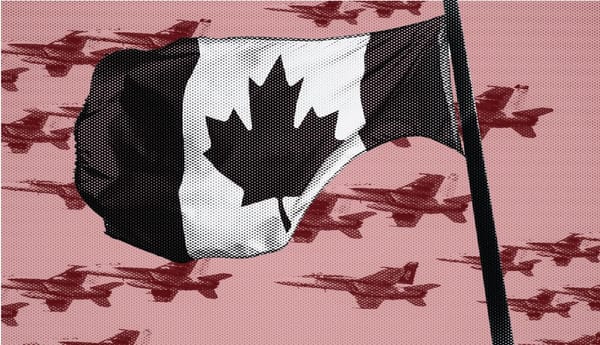Outside of Ontario and Quebec, it looks as if the first wave of the COVID-19 pandemic is nearly over. Deaths have slowed and politicians have promised to re-open the economy. Even inside the two provincial hotspots, where infections and deaths continue to rise, premiers François Legault and Doug Ford are working on plans to give businesses a way to operate.
While the first wave may be over in some parts of Canada, the second wave has already started, seeded by infection rates rapidly taking over factories.
In British Columbia, a province that has managed to flatten and lower its curve, there are several ongoing outbreaks at food processing plants and in resource extraction. As of May 4, the province had more than 2,200 COVID-19 cases. Of those cases, there were almost 100 tied to three poultry processing facilities in Coquitlam, the Fraser Valley and Vancouver. There were also more than 130 cases at the Mission Institution prison. (The total number of cases in the province has since risen to more than 2,300).
B.C.’s Public Health Officer Bonnie Henry also linked a new outbreak to workers who travel to the tar sands project in Kearl Lake in Alberta, 70 kilometres north of Fort McMurray, for work. She has asked those workers to self-isolate when they return to B.C. in between their shifts. Imperial Oil, the owner of the tar sands operation, has said they’re working with Alberta Public health to test the entire workforce, putting out a special alert claiming, “We are taking this situation very seriously.”
Alberta has seen outbreaks across various industries, which threaten to be the engine of the next phase of the illness. The meatpacking industry has been hit especially hard, with outbreaks at three facilities leading to at least two worker deaths: one at JBS Meatpacking in Brooks and one at Cargill in High River. The Cargill outbreak alone has directly and indirectly infected more than 1,500 people.
A poll conducted by the workers’ union United Food and Commercial Workers Local 401 found that 85 per cent of the workers are afraid to return to their jobs. Despite their fears, Cargill opened the plant on May 4.
There are also outbreaks in distribution plants: At least nine infections have been reported at an Amazon facility in Balzac, and at least 30 infections at a Purolator facility in Calgary.
In addition to the workers who have died at JBS and Cargill, there have been other non-healthcare worker deaths: at least 10 taxi and limo drivers at Pearson Airport, one at a Real Canadian Superstore location in Oshawa, Ont., and a worker at the Lac des Iles mine outside of Thunder Bay.
Migrant agricultural workers are also becoming infected with COVID-19 after arriving in Canada, with outbreaks impacting more than 80 across southwestern Ontario.
COVID-19 has been a complete disaster in long-term care, but the next crisis will be related to the worksite, where vulnerable workers who are low waged, racialized or temporary foreign workers will be at the whim of their bosses’ ability to control the spread.
These workers might be on sites where they’ve been given adequate personal protective equipment (PPE). They might speak enough English to raise a health and safety concern to their boss. They might be given barracks where they have separate rooms. But in absence of being mandated to ensure social distancing is possible, the responsibility is left to the owners alone.
This is setting up a potentially disastrous situation, where our collective capacity to control COVID-19 is based solely on the benevolence and care of an employer.
The problem, of course, is that employers aren’t more likely to be benevolent during a pandemic than any other time. Already, Amazon has been accused of hiding employee cases within its Brampton facility, news that only broke thanks to an anonymous whistleblower who told Global News. Relying on employers to contain the disease is dangerous.
It’s this lax approach to private companies that has helped fuel the crisis in long-term care. The companies who operate these homes should have had protocol in place to limit the spread of infectious diseases. But cost-saving measures, such as putting several residents together in the same room, outsourcing food production and delivery, and underpaying staff such that they needed to work at multiple homes, all played a role in why COVID-19 spread so fast.
The meatpacking industry, a place where cleanliness is key and workers regularly wear PPE to avoid infecting meat, has still been unable to curb the virus. In the United States, more than 20 workers have died in this industry. The industry’s reliance on workers to perform under grueling conditions and for low wages makes them a tinderbox for COVID-19 infection, all so that we can have cheap hamburgers.
Every action we take, or fail to take, now will have a direct result on the infection and death rates of the next two weeks. Rather than rush to open the economy, our politicians need to take what these infections are telling us seriously: We need to stop the exploitation of low-waged, racialized workers, and use this moment to change the way our economy works.







